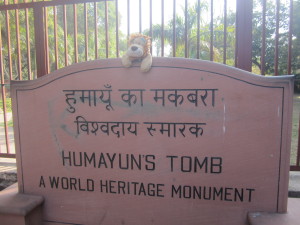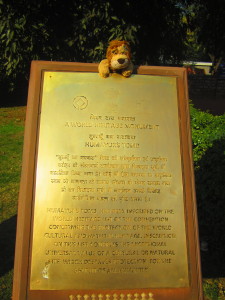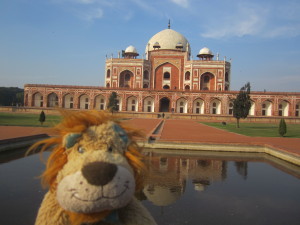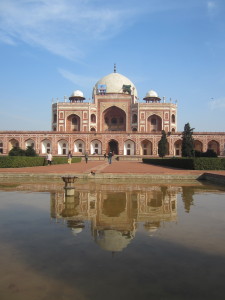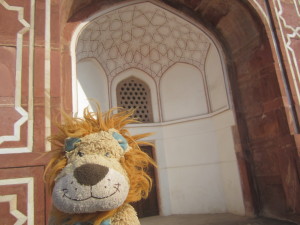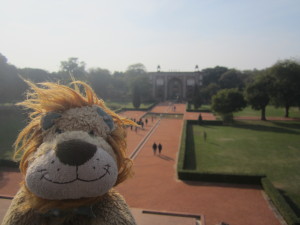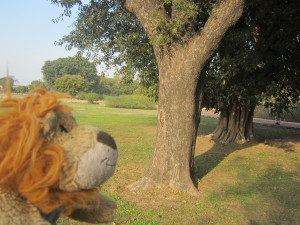Lewis the Lion stood perplexed looking onto Connaught Place in the heart of New Delhi. How on earth was he going to cross to the other side? The traffic was simply crazy as it whizzed and pounded around this giant circle, with roads radiating out of it like spokes from a wheel. He could tell that the British Empire had clearly left its mark on India (for better or worse) as this was clearly Victorian architecture, modelled on the Royal Crescent in Bath, England. Eventually, Lewis the Lion’s clever friends managed to flag down a tuk-tuk which took him to one of India’s world heritage sites: Humayan’s Tomb. The ride in itself was an adventure but he will tell you more about the Indian traffic in another blog!
After proceeding through the pay-booth, where Lewis the Lion paid 250 rupees to enter, he could see that behind the tall gates lay a beautiful garden with carefully manicured walkways.
He wasn’t really sure where he was if he were honest, as it had been his friends that were the ones to instigate the trip so he was eager to learn more from the panel at the entrance. He discovered that Humayun’s Tomb was the first tomb garden in India and was built in memory of the second Mughal emperor, Humayun by his wife.
It was designed by a Persian architect, Mirak Mirza Ghiyas in 1562 and was completed three years later. Lewis the Lion simply loved the symmetry of the place! He discovered that this tomb established a standard for all later Mughal monuments which followed its design, including the famous Taj Mahal in Agra. (He will tell you more about that too in one of his later blogs!).
Not only did the garden and the tomb itself seem to be perfectly symmetrical, but Lewis the Lion loved the way the design incorporated a further reflection in still planes of water as you can see in this photo.
His adventurous ways took him into the tomb itself which had beautifully ornate decorations in marble. From here he was able to climb some steps that gave him a wonderful view out over the geometrically arranged Char Bagh Garden.
“Yes,” he thought to himself, “this is very pleasing on the eye!”
The garden itself is divided into four parts, based on the Islamic concept of paradise. Lewis the Lion absorbed the tranquillity of the place and agreed that it really was a little bit of heaven here on earth. It seemed to him that the Mughals really had conjured up some kind of magic through this symmetrical design!
In addition, he laughed his little laugh as he delighted in seeing squirrels scamper up the trees in the garden. They certainly were funny the way they ran in jerky movements around the garden!
If you were to design a symmetrical garden or building, what would it look like? What features would you include?


